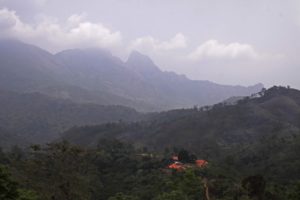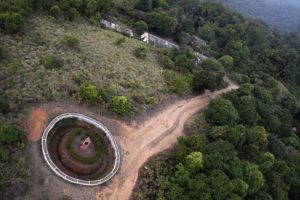The Silent Valley Movement is widely considered a successful environmental movement, but what happened to the Adivasi communities that depended on those forests? Neeraja explores.
Neeraja K.S.
When you take a river as a site for understanding society, you are inevitably labelled an ‘environmentalist’. To begin with, such a label identifies rivers under a particular category of ‘environment’. I am interested in the implications of this singular label for anyone who speaks of/for the river. So I propose that understanding how things come to be labelled or identified is central to how social issues are conceptualised, and solutions identified. Analyzing these classifications tells us whose worldviews are centred in social movements—for whom is the river just one part of an ‘environment’? As such, these labels also impact the outcomes of social movements.
Here, I am trying to look at some aspects of the Silent Valley Movement (hereafter SVM) in Kerala which has a pioneering role in ascribing a particular ‘environmental’ identity to rivers in Kerala. Despite the many regional social movements that have occurred in the postcolonial period around the construction of dams in India, the SVM in Kerala is notable for gaining enough popular support to stop a hydroelectric project across the Kunthipuzha River in the Palakkad district of Kerala. The area suggested for the dam construction was later declared as a National Park in 1984 as a ‘solution’ to the environmental problem that dams posed. The active presence of intelligentsia from various fields such as science, technology, and literature in the SVM turned the movement into what Kay Milton (1995) calls a ‘transcultural discourse’. In other words, this vanguard connected the particular goals of the SVM to the broader discourse of environmentalism on a planetary scale even though multiple and contradictory ideologies existed within the movement. As a result, today, the SVM is uniformly classified as an ‘environmental’ or ‘ecological’ movement (India Today 2009). In this article, I wish to explore the interaction between the indigenous claims and movement-driven environmental governance systems by placing the trajectory of SVM in the context of other contemporary movements around dams.

What the ‘Environmental Movement’ Label Erases
Before dams became exclusively ‘environmental’ issues, the word that most commonly turned up in frontline discussions around dams was ‘displacement’. The displacement discourses that were forged by social movements around dams defined displacement in the context of differential land relations and land ownership of women, Adivasi, Dalits, artisans, nomadic communities, and other marginalised sections of the community. Here, communities that are even distantly dependent on the land for their life and livelihood too were recognised as the affected ones. However, the only law concerned with displacement was the Land Acquisition Act of 1894 (LAA hereafter)—a colonial law adopted by the postcolonial Indian government to acquire land for development. Moreover, the LAA was ineffective in holding the dam authorities or the state accountable for the land rights of various communities affected by the project. The LAA was exploitative in nature and resisted any legal efforts to challenge the state power through the provision of the doctrine of ‘eminent domain’ and ‘public good’. Therefore, challenging the LAA was one of the prime concerns of early social movements around dams in India.
Besides, in many cases, the dams were constructed in valleys that had already been categorised as ‘forest’ area (reserved forest) under the Indian Forest Act, 1927—another law of colonial origin. In such ‘forest’ land, the possibility for a people’s movement around the dam proposal is further curtailed by the Forest Acts coupled with the LAA. In most cases, the people’s resistance was silenced when they were quickly evacuated from the submergence area or were forced to migrate by the forest governance mechanisms in those areas.
It is in this historical context that I revisit the SVM which tried to embrace the idea of concern for ‘environment’ in the discourse around a dam proposed in such a ‘forest’ land. Such an environmental identity, as Baviskar (2005) says, has both enabling and disabling impacts in shaping a movement, and this has been true for the SVM as well. This argument is not to deny the efforts and impact of a social movement altogether—the movement indeed fought against all odds when the government of Kerala and all opposition parties had wholeheartedly supported the dam project. Rather, drawing from the archaeological study of dams in pre-colonial India by Katherine D. Morrison (2010), I argue that the debates and decisions around dams should recognise the project’s impact on both nature and the human environment. Rather than valorising these spaces as pristine natural zones as SVM did, we should aim for shared solutions with the consent of the people who had customary rights over the fruits of the land. For example, while trying to explain why the Silent Valley is called an ‘evergreen forest’, a scientist quoted in a book on the SVM (James 2010) says,
This is a biosphere. It needs to be protected in the same manner as before. It has no history of human inhabitation as it was not suitable for it…. (87) [Translation from Malayalam by author]
To counter this narrative by SVM proponents, pro-dam activists tried to prove human presence in the region by drawing on the history of colonial interventions and the illegal tree-felling that had been happening after independence in this region (Balanandan in James 2010, 173-175). Therefore, the absence or presence of ‘humans’ became a qualifier to define the ecological importance of a region. As a result, unlike other contemporary movements around dams, the debate around SVM became solely about proving either the ‘ecological’ or ‘economic’ value of the proposed dam region, where both claims were justified in the name of overall ‘public good’. Within this narrow binary, the existence of the Adivasi communities around the dam construction region and their historic relation with the region was erased.
Demystifying and Historicising Silent Valley
Historically, ecology is the study of the economics and politics of nature, relations among organisms, nature-cultures and more. But it continues to exist only as a minor science, philosophy, and praxis. Ecological discourses during industrialisation defined ecology based on a binary of humans and nature ‘out there’. However, Lyotard (1989) identified ‘ecology as a discourse of the secluded’, where the secluded are disadvantaged groups like women, slaves, animals, differently-abled, marginalised, etc. who do not get represented in the mainstream discourse. In this context, the environmental discourse popularised by the SVM could have become a discourse of the secluded by forefronting the habitat rights of communities, plants, and animals in the Silent Valley region.

Instead, Adivasi narratives were kept secluded/private in the overall debate around the dam. For example, the Muduga community who lives around the Silent Valley forest has a story of why they left their early life at the Silent Valley forest region and migrated to other forest areas but still depended on the Silent valley for farming and collecting Non-timber Forest Products:
‘There is our folk song which says that our ancestors left the Silent Valley area because we would not have a normal human life with the occurrence of death if we stay there. Therefore, to live a normal human life with death, we left that region and migrated to other forest areas’ (conversation with K. A. Ramu from Muduga Community).
These Adivasi perspectives were never heard in the SVM as it unfolded. Here, it is useful to turn to theorist Mirko Nicolic (2018), who suggests identifying various conjunctions between environmental justice and people’s struggles to illustrate the intersectionality of the ‘ecology of the secluded’.
In light of Nikolic’s theory, it is interesting to note some of the representations of Adivasi communities in the writings of scientists or nature-lovers in the context of SVM. Many of them appreciate the capacity of some of the Adivasi communities who live around ‘pristine forests’ to find their way anywhere inside it (Malayalam 2009). These writings, however, do not tell the history of this seemingly wondrous capacity of the Adivasis—how they came to be in the forest periphery, how they developed relationships with the land and its fruits, how they came to learn the routes. Because of this ahistorical idea of a ‘pristine forest’, the basic community concerns raised in other contemporary dam movements (Hemadri et al., n.d.) were simply not raised in the SVM—the right to be consulted and informed even the communities who do not possess any legal land titles but have customary rights over the land as well as life-supporting systems in it, and the recognition that ‘public good’ in the case of dams did not mean good for all, thereby challenging the doctrine of eminent domain.

Rather, it was the creation of a ‘biosphere reserve’, ‘protected area’, etc; that was legitimated as part of this movement with the support of the Wild Life Protection Act 1972. On the other hand, under this Act, the Collector enjoyed similar powers to acquire land as in the LAA. In some cases where communities were not displaced, laws were made to control the customary rights of those communities over forests and life-supporting systems. Thus, the seemingly successful protection of Silent Valley from the dam continued to exclude the communities that depended on it. A study of the implementation of the FRA (Forest Rights Act) 2006 in the Silent Valley National Park demonstrates how the rights of the Adivasi communities have been curtailed after the introduction of National Park in 1984 (Sathyapalan and Reddy 2010). Sathyapalan and Reddy note how the communities are still fighting for rights over their land and forest.
While it is true that many lessons can be learned from the success of SVM (Syed 2020), it is equally important to acknowledge its shortcomings as a movement. SVM failed to consider the historical experience of the communities that depended on the land for generations, and in doing so erased the perspectives of a critical group of rightholder.
References
- Balanandan, E. 2010. “Silent Valleyum Parisara Paristhithi Samrakshanavum (Malayalam), in Silent Valley- Oru Paristhithi Samarathinte Charithram [Silent Valley: History of an Environmental Movement], Study by Saji James, Mathrubhumi Books, Kozhhikode.
- Baviskar, A. 2005. “Red in Tooth and Claw? Looking for Class in Struggles over Nature”. Social Movements in India Poverty, Power, and Politics, 161-79, edited by Ray and Katzenstein.
- Hemadri, Ravi; Mander, Harsh, and Nagaraj, Vijay n.d. Dams, Displacement, Policy, and Law in India.World Commission on Dams, Cape Town.
- India Today. 2009. 1976- Silent valley movement: The genesis of green. 2009. 1976- Silent valley movement: The genesis of green – Cover Story News – Issue Date: Dec 28, 2009 (indiatoday.in) accessed 2nd Sep. 2021.
- James, Saji. 2010. Silent Valley- Oru Paristhithi Samarathinte Charithram [Silent Valley: History of an Environmental Movement], Mathrubhumi Books, Kozhikode.
- Lyotard, Jean-Francois. 2000. Ecology as discourse of the Secluded. The Green Studies Reader: From Romanticism to Ecocentrism, 135-38, edited by Laurence Coupe. Routledge.
- Malayalam (Weekly). Silent Valley 25. 13th November 2019.
- Milton, Kay. 1995. Environmentalism: A view from Anthropology, Americal Ethnologist Vol. 22(2).
- Morrison, Katherine D. 2010. Dharmic Projects, Imperial Reservoirs, and New Temples of India: An Historical Perspective on Dams in India, Conservation and Society, Vol. 8(3): 182-195.
- Nicolic,Mirko.2018.Ecology(Minoritarian). https://newmaterialism.eu/almanac/e/ecologminoritariany-.html accessed 10th September 2021.
- Sathyapalan, Jyothis and Reddy, Gopinath M. 2010. Recognition of Forest Rights and Livelihoods of Tribal Communities: A Study of Western Ghats Region, Kerala State, Centre For Economic and Social Studies, Hyderabad.
- Syed, Nissam. 2020. Athirappally Project: Lessons for Kerala from the Silent Valley Movement. Athirappally Project: Lessons for Kerala from the Silent Valley Movement (the wire. in). Accessed on 2nd Sep. 2021
About the Author: Neeraja K. S. is a research Scholar at Tata Institute of Social Sciences, Mumbai. Her PhD focuses on exploring the social dimensions of the conflicts over rivers in Wayanad Kerala which include multiple meanings attributed to the river and conflicts around it, as well as the historical development of river governance mechanisms. She can be contacted at neerajaks.87@gmail.com.

One comment